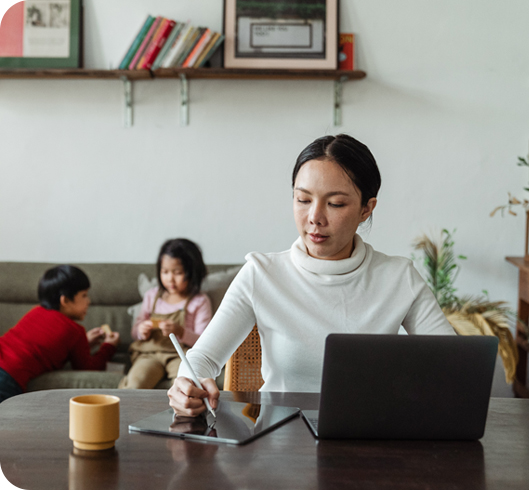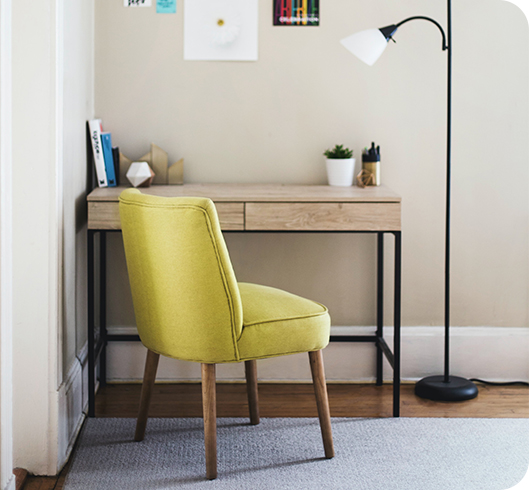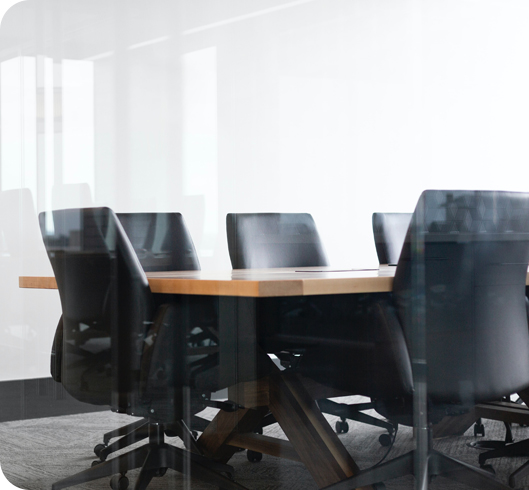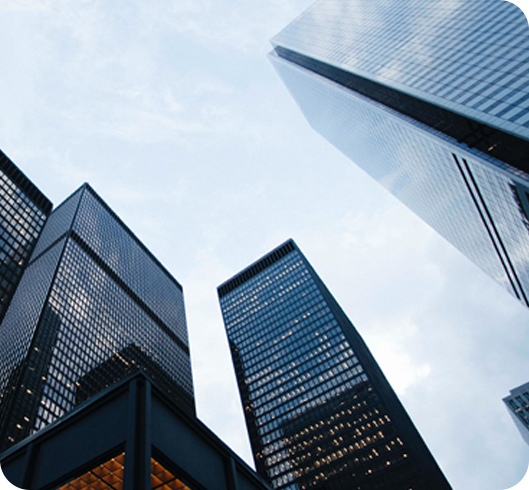A COVID-19 Secure Office Space
How the 2020 lockdown has impacted the workplace industry.Wouldn’t it be great if we could predict the future? Answer all of life’s big questions. How will COVID-19 change office design – will it turn into ‘COVID-19 Office Planning’? Should business owners downsize their office space? Will working from home become the new norm?
There has been much speculation on how coronavirus will change the layout of workplaces, from the return of the cubical office to eliminating the need for physical spaces completely. Additionally, there have been some logical predictions using recorded data and statistics on how both employers and employees feel about working from home (WFH), and if it is likely to be a long-term shift.
Ultimately, we do not have the answers to questions of future scenarios. However, we can draw on our experience collectively and have a truly rounded view of our industry.
The intention of this article is not to bombard you with data and statistics, but to provide a summary of experiences from business owners, employees, furniture manufacturers, and resellers. These individuals are the workplace’s frontline – eyes to what is currently happening and how we can go into the future more knowledgeable, whenever that may be.
Health
The mental and physical health of employees has been at the forefront of the pandemic, both reducing the risk of infection and maintaining a healthy mental state of mind, no matter where you are working from.
Home
On 23rd March, each office worker was thrust into one of two paths. Either to WFH for the foreseeable future or, if essential, remain working in a socially distanced office space.
Many enthusiastically packed up their desks for what seemed a vacation away from the office. However, as weeks turned to months, the excitement wore off and the need for human interaction began to settle in.
Prior to lockdown, it had been a common association that technology had caused us to be less sociable. Ironically, it has been the ability of so many digital platforms that have enabled families, friends, and colleagues to feel connected. For every individual who is eager to again enjoy the relaxing ‘me’ time of the daily commute, to flick on the kettle and catch up with peers – there is another whose life has been refreshed.

The laborious commute has been swapped for family or personal time, the unwelcome office banter has been muted (although, maybe replaced with the echoing requests from children) and an opportunity has arisen to create a space that reflects and enhances your own productivity.
However, the office comforts of an ergonomic task chair and correct monitor positioning have also been missed. Many employers have shipped sufficient equipment to their staff, as employers do have a responsibility to protect the health and safety and welfare of homeworkers. Time was not on the side of the employer, therefore our backs and posture have temporarily suffered.
A desk and a comfortable task chair are items we have been programmed to perceive as a ‘suitable’ working environment. The introduction of height adjustable desking in offices brought about relief to the pressure points of sitting for long periods of time. Therefore, it can be questioned whether a variety of seating positions, such as a sofa, dining table, and even the garden bench, the movement of our bodies between these, far outweighs the need for an ergonomic task chair in our homes.
The addition of a task chair in my living room would undoubtedly add stress in the times I was not working. Whereas a laptop, usable throughout the house, can be easily cleared and stored to keep a clear divide between my work and home life.
Office
Those that remained in the workplace may have felt life was changing around them, not to them. And whilst there may be the signs of additional staff returning, many businesses are indicating additional staffing will only be considered at the beginning of September, delaying their own COVID-19 office planning.
Many of the people I have spoken to have referred to the office as a ‘hub’ or ‘community’. Employees are missing the social aspect of ‘going to’ work and the sense of belonging to a group. With social distancing and less than 50% occupancy in place for COVID-19 office planning, the positivity that you may usually experience may not occur.
Therefore, driving on people’s experiences, we can begin to eliminate the rumours of the return of the cubical office and ignore the concept of abolishing the need for physical spaces completely when considering our COVID-19 office planning.
The need for human interaction is part of our DNA; going to a place of work feeds that need. The absence of this dose of physical communication could have negative effects on our mental health and personal lives.
Design
A good workspace is designed to make you feel a certain way; alert, productive, sociable – often a contrast to the feeling of one’s home. Even as design trends have seen a shift in recent years, the pandemic has set these worlds on a collision course.
Home
Space is a critical factor in whether a design can be successful. When considering COVID-19 office planning; sufficient space is required for both physical objects, as well as individuals’ personal space. Therefore, an individual’s living situation has a huge impact on whether it is possible to ‘design’ an office into your home.
In recent years, office design has been focused on bringing the relaxed feeling of our homes to the workplace. This is now being inverted, COVID-19 office planning has highlighted the need to set up an ergonomic working environment in rooms not fit for purpose. It has been common practice to work at a dining table, on the sofa or, dare we say it, in bed!

Some may be lucky to have a door that can be closed once the workday is done, but many may find their paperwork sprawled across the dining table well into the evening, making it difficult to ‘close’ the working day. A historic bureau desk comes to mind as a fitting solution, a product momentarily left in history due to the evolution of technology and space requirements to house such equipment, may soon be a familiar item of our homes once again.
The physical appearance aside, if the setup that has been created works; it’s a successful office environment. Whether that is at the end of the bed, in a spare room, or amongst your household in the living room. We have been compelled to attempt to create spaces that reflect the way we work and the task at hand.
Office
Flexible working spaces, hot desking, and informal meeting pods, the poster products of teenies (1Os, or 2010-2019) that filled our office to provide areas that reflected the task, housed technology and promoted an independent and relaxed working. For COVID-19 office planning, the question must be asked; are these the same products that are currently labelled high-risk areas for the spread of infection and are advised to not be used, without thorough cleaning between users?
A product that has demonstrated its worth, that in recent years has not been a priority within office design, is the office desk itself.
From my experience producing COVID-19 secure space plans and following government guidelines of 2-meters apart, an ‘every other desk occupancy’ system can make it possible to have up to 50% of the usual capacity without the requirement of additional purchases.
This is assuming each desk is a minimum of 1400mm, desks are allocated per person, and users are positioned diagonally to one another to eliminate the need for additional screens.


Some manufacturers have started making their products more open and easy to clean, incorporating antimicrobial materials, directly tackling the notion that the difficulties posed by pandemics could be here to stay. Innovations like this could play a valuable role in allowing people to be close while protected, helping the workplace to retain the feeling of a social and creative hub.
At the beginning of lockdown, and during the initial fears of our offices being made redundant, there was a huge hype in Perspex screens; in some cases, businesses were quoted upwards of £100k to install screens between seeking.
Of course, these screens have their place and do provide protection and reassurance. However, once the dust settled on the initial panic that employees could not come to the office, working from home was cleared as a feasible option for most. It became paramount that these screens were not a long-term solution, being far too big an investment in difficult times. Nevertheless, a new breed of screens may stay a common sight in our offices.
Infrastructure and productivity
The infrastructure of a business is its basic physical and organisational needs, ensuring it can operate at a sufficient productivity level.
Home
The option to work from home has been on an incline for the past decade. Whilst some businesses have been apprehensive to allow their staff this opportunity over the fear of lack of monitoring productivity, others have relished in giving employees more control over how they work to encourage self-motivation.
2020 was the year a worldwide challenge was forced upon the modern infrastructure of technology, whether an employee or company was previously on board with the option or not. From hardware to cloud servers, to the strength of our beloved World Wide Web.
The duration of lockdown has been a sufficient amount of time for issues to arise and be resolved, for all parties to experience an alternative working life and, most importantly, a visible change of productivity.

For some, an office can be a stage that you do not feel comfortable performing on, such as making phone calls to customers and the fear of judgement. completing these in your home could increase confidence and, in turn, productivity. Similarly, focus tasks in larger offices, where quiet areas are either occupied or unavailable, may have taken longer to complete than when done at home.
In contrast, the constraint of not having physical interaction with customers and colleagues can hinder performance. External sales teams, whose livelihood rely on their personalities thriving with prospective customers may not be able to communicate the same over a video call.
Creative teams who rely on the skills of multiple individuals to collectively create a winning concept have struggled to collaborate.
These team’s foundations are the talents of the employees and currently, the digital setup is unable to recreate the buzz of a physical brainstorm.
Office
Many offices of those I spoke with sit mostly silent, being used by only a handful of the team. Of course, the infrastructure remains in place and those working from the office should have no movement in the ability to complete tasks or the level of productivity. By and large, the biggest hurdle was the lack of colleagues around them, with them too also relying heavily on video calls to stay connected to the team.
It’s biased to exclusively focus on the workforce of an office space when many of these buildings are brought to life by the visitors that walk through the doors.
The absence of our customers may have encouraged the speculations of the dissolution of the need for offices, as we became blind to business purpose.
Would it be unreasonable to assume a reduction in productivity and business results when meeting rooms are left unused, the polite exchange within receptions muted and the physical site of a business handshake discouraged?

Summary
Our mindsets towards office space have shifted. While I am neither suggesting this as a positive or negative, it would be ignorant to dismiss the huge impact the 3-month critical lockdown will have had. Technology has played an important role in keeping people and businesses connected, to go backwards and revert to a previous normal would contradict our human instincts to self-improve and survive in peculiar situations.
We have seen what can be done from home, but also gained a greater understanding of the importance our office spaces have in our lives. These experiences and new understandings will begin to provide an insight into the new horizon our office’s spaces will inherit.
Thank you for taking the time to read my recent article. At times like these, it’s important to come together as an industry.
We have the pleasure of working with customers from all corners of the workplace sector; from end-user clients to furniture manufacturers, and during the last 3 months we have gained a rounded view of many individuals’ experiences. We felt it was fitting to document this and share it with everyone.

Whether you are a business looking for post-COVID-19 office planning, a furniture manufacturer seeking marketing imagery for a new product launch, or an office fit our company searching for CAD support: our design consultancy can provide a personal, impartial and cost-effective solution.
With special thanks to Alan Boswell, Clive Glithero, David O’Coimin, Elizabeth Allen, Joe Perkins, Chris Riley, and Greg Stewart for their time and insight over the past few months that inspired this piece.
Another ‘thank you’ to the clients I have spoken to over the last 3 months that may have helped, perhaps unknowingly, to provide industry insight. This piece is very much about the people of the industry – I’ve enjoyed connecting the dots.
Download the full report here